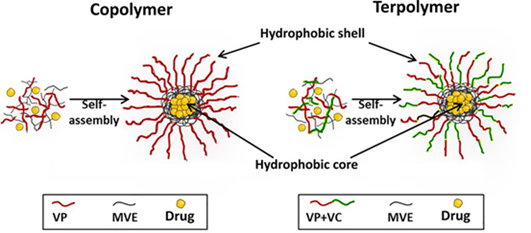Internationale Partnersuche
Innovation & Technologie Angebot
Self-assembled functional acrylic polymers as vehicles of bioactive compounds
Country of Origin: Spain
Reference Number: TOES20190513002
Publication Date: 13 May 2019
Summary
A Spanish biomedical research and networking center has developed a new family of innovative amphiphilic copolymers and terpolymers. These new compounds form bioactive polymeric nanoparticles, which can be used for the treatment of skin and bone diseases. The research center is looking to establish license, research or technical cooperation agreements with industrial partners either from Biotech or Pharma sector to enter pre-clinical collaboration or developing proof of concepts.
Description
This research networking center gathers some of the main Spanish research groups in biomedicine, located in more than 100 institutions like universities, hospitals, and technological centers distributed around the country.
This innovative family of amphiphilic copolymers and terpolymers can form bioactive polymeric nanoparticles to be used in nanomedicine or regenerative medicine, for example for the treatment of skin diseases and osteoarticular regeneration.
Nanomedicine represents one of the most attractive tools to develop new therapies to effectively treat some diseases. However, one of the most relevant limitations of nanoparticles (NPs) drug delivery systems is their poor cellular internalization that significantly reduces the intracellular dosages of drugs to the level below the therapeutic window. In this sense, it is imperative new intelligent-responsive delivery systems to be developed in order to counteract this limitation.
In this context, polymer therapeutics, and more specifically polymer drugs offer the opportunity to obtain bioactive macromolecules with improved pharmacological properties and can be designed with amphiphilic properties that give rise to the formation of micelles or vesicles through self-assembled mechanisms. These polymeric nano-assemblies have several advantages if compared to other traditional treatments. Particularly, the core of the polymeric NPs can be used to encapsulate hydrophobic drugs, improving their bioavailability, decreasing their toxicity and protecting them from degradation processes.
The research networking center is looking to establish license, research or technical cooperation agreements with industrial partners either from Biotech or Pharma sector. These types of cooperation are envisaged in order to enter into pre-clinical collaboration for drug testing and to continue researching until a clinical proof of concept is available.

Advantages and Innovations
These innovative nanoparticles have shown good stability in physiological medium, and they are easily eliminated by the body through the normal metabolic pathway. They can be administered by injection in the area that is required or applied in aqueous dispersions or in hydrophilic gels either topically or locally. They have good cytocompatibility.
This family of copolymers and terpolymers contain an antioxidant agent as a bioactive and hydrophobic component, they are highly antioxidant and amphiphilic.
These nanoparticles can be used as controlled delivery systems for the administration of bioactive agents with low solubility in physiological conditions (e.g. active substances with analgesic, anti-inflammatory, activating tissue regeneration, antibiotic, antiproliferative, antimicrobial, etc. effects)
Stage Of Development
Under development/lab tested
Stage Of Development Comment
In vitro studies, ready for in vivo studies
Requested partner
Patent ready for licensing-out.
the research center is seeking industrial partners, either Biotech or Pharma, to:
- enter into preclinical R&D collaboration (in vitro and/or in vivo drug testing) via research or technical cooperation agreement.
- Further development until clinical proof-of-concept via license agreement.
Cooperation offer ist closed for requests

